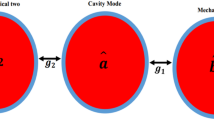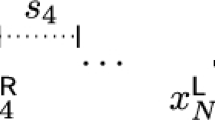Abstract
Due to the unavoidably dissipative interaction between quantum systems with their environments, the decoherence flows inevitably into the systems. Therefore, to achieve a better understanding on how decoherence affects on the damped systems, a fundamental investigation of master equation seems to be required. In this regard, finding out the missed information which has been lost due to irreversibly of the dissipative systems, is also of practical importance in quantum information science. Motivating by these facts, in this work we want to use superoperator and matrix techniques, by which we are able to illustrate two methods to obtain the explicit form of density operators corresponding to damped systems at arbitrary temperature T ≥ 0. To establish the potential abilities of the suggested methods, we apply them to deduce the density operator of some practical well-known quantum systems. Using the superoperator techniques, at first we obtain the density operator of a damped system which includes a qubit interacting with a single-mode quantized field within an optical cavity. As the second system, we study the decoherence of a quantized field within an optical damped cavity. We also use our proposed matrix method to study the decoherence of a system which includes two qubits in the interaction with each other via dipole-dipole interaction and at the same time with a quantized field in a lossy cavity. The influences of dissipation on the decoherence of dynamical properties of these systems are also numerically investigated. At last, the advantages of the proposed superoperator techniques in comparison with matrix method are explained.
Graphical abstract

Similar content being viewed by others
References
U. Weiss, Quantum dissipative systems (World Scientific, Singapore, 1999)
T.L. Hill, Thermodynamics of small systems (Courier Corporation, 1962)
C.W. Choo, Information Management for the Intelligent Organization: the Art of Scanning the Environment (Information Today Inc., 2002)
W.R. Hamilton, On a General Method of Expressing the Paths of Light, of the Planets, by the Coefficients of a Characteristic Function (PD Hardy, 1833)
W. Vogel, D.G. Welsch, Quantum Theory of Damping (Wiley Online Library, 2006)
A. Leggett, S. Chakravarty, A. Dorsey, M. Fisher, A. Garg, W. Zwerger, Rev. Mod. Phys. 59, 1 (1987)
W.G. Unruh, W.H. Zurek, Phys. Rev. D 40, 1071 (1989)
J.A. Wheeler, W.H. Zurek, Quantum Theory of Measurement (Princeton University Press, Princeton, 1986)
P.O. Lowdin, Phys. Rev. 97, 1474 (1955)
N. Gregoire, I. Prigogine, Self-organization in nonequilibrium systems (Wiley, New York, 1977)
J. Schnakenberg, Rev. Mod. Phys. 48, 571 (1976)
G. Lindblad, Math. Phys. 48, 119 (1976)
A. Kossakowski, Rep. Math. Phys. 3, 247 (1972)
H. Risken, Fokker-Planck Equation (Springer, Berlin, Heidelberg, 1984)
P. Langevin, CR Acad. Sci. Paris 146, 530 (1908)
G.J. Milburn, Phys. Rev. A 44, 5401 (1991)
H.M. Moya-Cessa, V. Bužek, M.S. Kim, P.L. Knight, Phys. Rev. A 48, 3900 (1993)
H.M. Moya-Cessa, Phys. Rep. 432, 1 (2006)
J. Piprek, Y.A. Akulova, D.I. Babic, L.A. Coldren, J.E. Bowers, Appl. Phys. Lett. 72, 1814 (1998)
C.C. Gerry, Phys. Rev. A 59, 4095 (1999)
A. Beige, S.F. Huelga, P.L. Knight, M.B. Plenio, R.C. Thompson, J. Mod. Opt. 47, 401 (2000)
M.J. Faghihi, M.K. Tavassoly, J. Phys. B: At. Mol. Opt. Phys. 45, 035502 (2012)
V. Weisskopf, E. Wigner, Z. Phys. 63, 54 (1930)
M.O. Scully, M.S. Zubairy, Quantum Optics (Cambridge University Press, United Kingdom, 1997)
J.G. Peixoto de Faria, M.C. Nemes, Phys. Rev. A 59, 3918 (1999)
W.K. Wootters, Phys. Rev. Lett. 80, 2245 (1998)
V. Gorini, A. Kossakowski, E.G. Sudarshan, J. Math. Phys. 17, 821 (1976)
G. Lindblad, Commun. Math. Phys. 48, 119 (1976)
Author information
Authors and Affiliations
Corresponding author
Rights and permissions
About this article
Cite this article
Yazdanpanah, N., Tavassoly, M.K. & Moya-Cessa, H.M. Decoherence in quantum lossy systems: superoperator and matrix techniques. Eur. Phys. J. D 71, 171 (2017). https://doi.org/10.1140/epjd/e2017-70701-2
Received:
Revised:
Published:
DOI: https://doi.org/10.1140/epjd/e2017-70701-2




